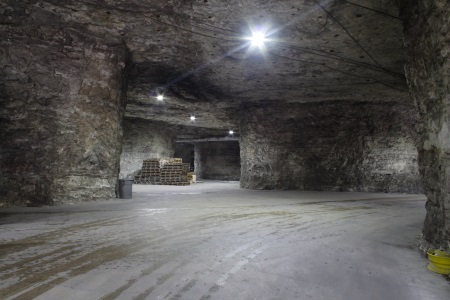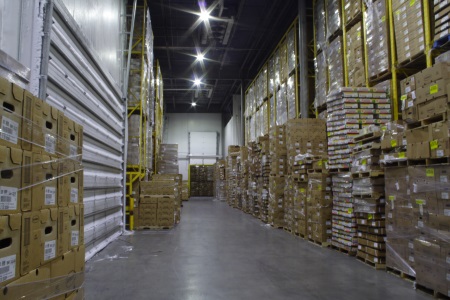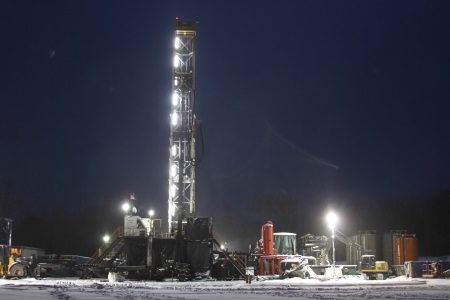As companies around the world continue to strive for leaner and more sustainable operations, upgrading to more energy-efficient lighting is one of the quickest and most effective ways to reach financial and environmental goals. And with the recent advancements in LED lighting, these goals are becoming easier than ever for companies to achieve.
This highly reliable solid-state technology is becoming one of the most attractive retrofit solutions for delivering immediate performance and ROI benefits from day one, with many facilities realizing a payback period of less than two years. While the savings may speak for themselves, the unique technology of modern LED lighting systems also offers significant performance advantages over traditional metal halide, incandescent and other solutions.
So what makes LEDs a better choice for contemporary industrial lighting?
Here are five ways LEDs outperform conventional lighting and how real companies are reaping the benefits.
1. LEDs cut energy costs
Compared to traditional lighting solutions, LEDs are a more efficient source of light and consume typically 60% less energy than metal halides, high-pressure sodium, incandescent, and mercury vapor fixtures. This significant reduction in energy costs could result in substantial cost savings for industries in regions where energy costs are particularly high.
Zero Mountain, a cold storage facility in Arkansas, switched out its metal halides with LED fixtures at two facilities and shaved 1.3 million kWh off its energy bill annually, saving more than $100,000 in electricity costs alone. In fact, the savings were so great that its utility provider, Southwestern Electric Power Company (SWEPCO), offered a custom rebate incentive for switching to LED fixtures that offset approximately 30% of the total project costs, including installation.

Fig. 1: Cold storage facility switched from metal halides to LED fixtures to save 1.3 million kWh annually.
2. LEDs reduce maintenance
By virtue of their solid-state design, LEDs are a more durable lighting solution and offer reliable, long-life performance for a decade or more, with some manufacturers now offering a 10-year full-performance warranty. The extended life and reliability of LEDs saves companies tens of thousands of dollars by significantly reducing annual maintenance expenses and freeing up staff to conduct more mission-critical duties than simply changing light bulbs.
As for the LED chips themselves, there are many fixture design factors that contribute to this longer life. For instance, since LEDs produce heat, proper thermal management is a critical factor. The most advanced designs incorporate state-of-the-art heat-sink technology to dissipate heat away from the LED components, improving performance and longevity and channeling heat away from the power supply.
Going a step further, some LED manufacturers custom-design power supplies specifically for their lighting fixtures, which allows manufacturers to have full control down to the component level, and tailor the electrical design and LED drive current to optimize both performance and longevity.
In one instance, a major oil company reduced annual operating costs by nearly $125,000 after retrofitting its refinery with LED lights, based almost entirely on the significant maintenance savings. By replacing 100 of its 400-W metal halides with 146-W LED High Bay fixtures, the company reduced maintenance expenses by $105,000 and cut energy costs by an additional $17,500 — major savings that will continue to add up over the life of the fixtures.
3. LEDs produce better-quality light
Unlike HID and other sources, LEDs are a “full-spectrum” light source with no gaps in the color spectrum, providing near-daylight illumination quality with a color-rendering index (CRI) in the 70 to 85 range (on a scale where 100 = natural daylight). By comparison, HPS sources are rated less than 30 CRI and mercury vapor is only slightly better at 50 CRI.

Fig. 2: LEDs provide near-daylight illumination with a CRI range from 70 to 85 compared to a CRI of 30 to 50 for other types of lighting.
The higher CRI eliminates the distortion of natural colors common with other light sources, making hues easier to distinguish. This is especially important in industrial settings where safety is critical and workers need excellent visibility to quickly and easily identify various colored wires, safety plaques, liquids, objects or smoke. The crisp, clear white light of an LED makes for more a comfortable working environment that reduces eyestrain and enhances human alertness, especially in 24/7 operations where employees are working an overnight shift.
4. LEDs perform well in harsh conditions
Being the more durable lighting fixtures, LEDs easily outperform all other lighting solutions in harsh environments where vibration, extreme cold, oppressive heat and other factors prove challenging — if not destructive — to conventional fixtures.

Fig. 3: LEDs perform better in the cold/harsh weather than other lighting types
With no delicate filament or bulb to break and less replaceable parts in the fixture, LEDs perform well in settings with extreme vibration or shock like drilling rigs, off-shore platforms and in process equipment areas. Conventional bulbs suffer in these conditions and tend to lose at least one-third of their working life—in some instances, the bulb only lasts between six to 18 months or less.
As for extreme temperatures, LEDs actually perform better in the cold, which aids in thermal mitigation within the fixture and proper thermal management, LEDs can tolerate extreme heat in excess of 200°F.
For Oklahoma-based Horizontal Well Drillers, upgrading to LED fixtures on its flagship 250-ton horizontal drilling rig eliminated the unexpected lighting failures that previously cost the company precious time and money in parts, labor and production. The high-vibration, corrosive environment coupled with frequent transport of the rig from one site to another meant most of the T8 fluorescent fixtures lasted only about six months. With the new LEDs in place, the company can now expect a decade of reliable performance even in the most challenging conditions.
5. LEDs are controllable
Beyond producing exceptional light, LED fixtures are advanced electronic devices with network-capable features that can enhance their energy efficiency and maximize operational benefits by controlling when and where light is provided. By equipping the fixture with a smart monitoring system, the company can remotely monitor their LED lighting system and software will provide reports on current light output, remaining fixture life and can even send text and e-mail alerts for maintenance needs and outage situations.
LEDs are also instant-on devices that can produce maximum light output at the flip of a switch, to which the several-minute upload time of conventional lighting cannot compare. The instant-on feature enables LEDs to pair easily with occupancy sensors, motion detectors, and timers that ensure the lights are on when needed and turned off when not.
At Zero Mountain, the addition of occupancy sensors improved both the company’s energy-efficiency and safety. By eliminating the need to keep lights on in unoccupied areas, the cold storage facility reduced total energy consumption by nearly 40% and no longer dealt with the prolonged warm-up of conventional lights in the cold temperatures. From a safety perspective, the instant-on LEDs are able to restore visibility instantly after an unexpected power outage and forklift drivers can use the occupancy sensors as caution signals for active areas.
The bottom line
Between the energy efficiency, maintenance savings, and overall lower cost of ownership, LED technology is already proven to be the most cost-effective alternative to conventional lighting systems in industrial applications, not to mention potential rebates and incentives.
With a more durable design and advanced features for convenience and extended performance, LED lighting can deliver significant savings, fast ROI, and outstanding performance in virtually any industrial application.
Advertisement
Learn more about Dialight





